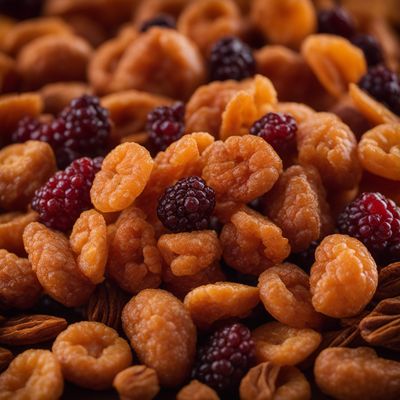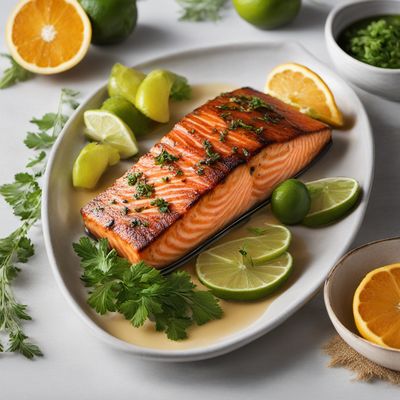
Ingredient
Fruit in vinegar or brine
Tangy Delights: Exploring the World of Pickled Fruits
Fruit in vinegar or brine refers to fruits that have been preserved by soaking them in a solution of vinegar or brine. This preservation method not only extends the shelf life of the fruits but also imparts a delightful tanginess to their natural sweetness. The fruits become infused with the flavors of the vinegar or brine, resulting in a unique taste that is both sweet and sour. The texture of pickled fruits can vary depending on the fruit used, ranging from crisp to tender. Visually, they retain their vibrant colors, making them visually appealing additions to any dish.
Origins and history
The practice of pickling fruits in vinegar or brine dates back centuries and can be traced to various cultures around the world. In ancient times, pickling was a common method of preserving fruits and vegetables, allowing people to enjoy them during seasons of scarcity. Different regions have their own traditional pickled fruits, such as pickled peaches in the southern United States or pickled plums in Japan. The art of pickling fruits has evolved over time, with new flavors and techniques being developed to suit modern tastes.
Nutritional information
Pickled fruits retain many of the nutrients found in fresh fruits, including vitamins, minerals, and dietary fiber. However, it's important to note that the pickling process may result in a slight loss of certain heat-sensitive nutrients. The nutritional content can vary depending on the specific fruit and the ingredients used in the pickling solution.
Allergens
There are no known allergens associated with pickled fruits in vinegar or brine.
How to select
When selecting pickled fruits, look for jars that are properly sealed and free from any signs of spoilage, such as mold or off-putting odors. The fruits should appear plump and retain their vibrant colors. Additionally, check the label for any added preservatives or artificial ingredients, opting for brands that use natural ingredients.
Storage recommendations
Pickled fruits should be stored in a cool, dark place, such as a pantry or cellar. Once opened, they should be refrigerated to maintain their freshness and quality. Properly stored, pickled fruits can last for several months.
How to produce
Amateur cooks can produce pickled fruits by following simple recipes that involve preparing a vinegar or brine solution, selecting ripe fruits, and immersing them in the solution. The fruits can be peeled, pitted, or sliced depending on personal preference and the desired end result. The pickling process typically involves allowing the fruits to soak in the solution for a period of time, allowing the flavors to develop.
Preparation tips
Pickled fruits can be enjoyed straight from the jar as a tangy snack or used as a versatile ingredient in various dishes. They can be added to salads, sandwiches, or charcuterie boards for a burst of flavor. The pickling liquid can also be used as a dressing or marinade. Experiment with different combinations of pickled fruits to create unique flavor profiles.
Culinary uses
Pickled fruits are commonly used in salads, relishes, chutneys, and as accompaniments to cheese or charcuterie boards. They can also be used to add a tangy twist to cocktails or mocktails.
Availability
Pickled fruits in vinegar or brine are commonly available in most grocery stores and supermarkets, as well as specialty food stores. They can also be made at home using fresh fruits and readily available vinegar or brine solutions.
More ingredients from this category

Fruit in alcohol or spirits
Boozy Bliss: The Infused Indulgence of Fruit in Alcohol

Dried fruit
Nature's Sweet Treasure: Preserved Fruits Packed with Flavor

Fermented fruit products
Nature's Probiotic Delights

Canned or jarred fruit
Preserved Delights: Unlocking the Flavor of Canned or Jarred Fruit

Candied fruits
Sweet Delights: Exploring the World of Candied Fruits

